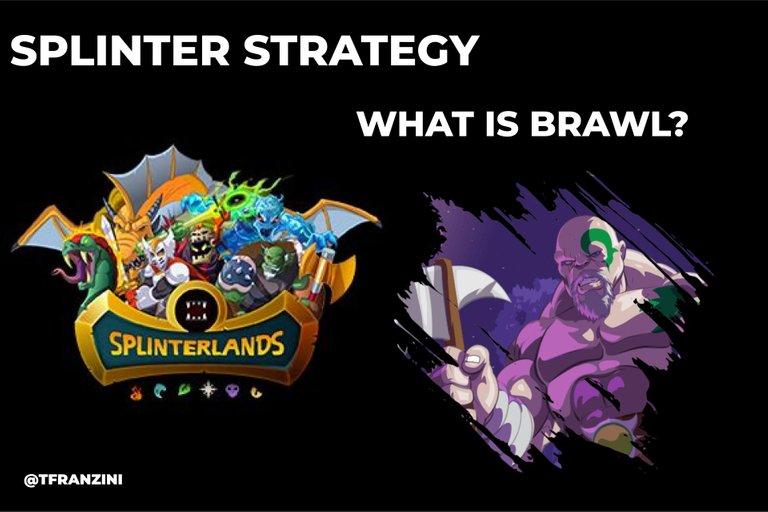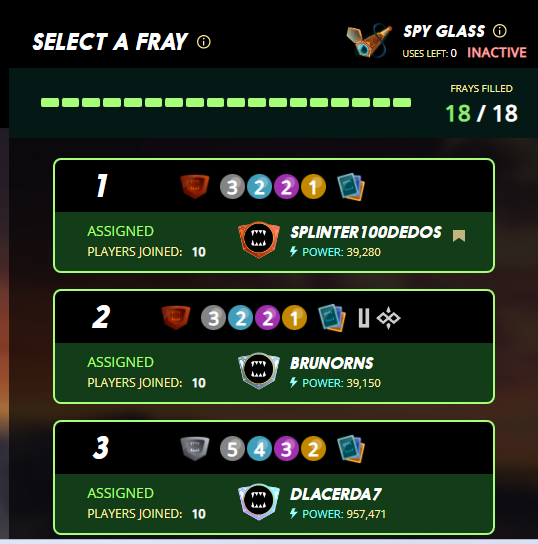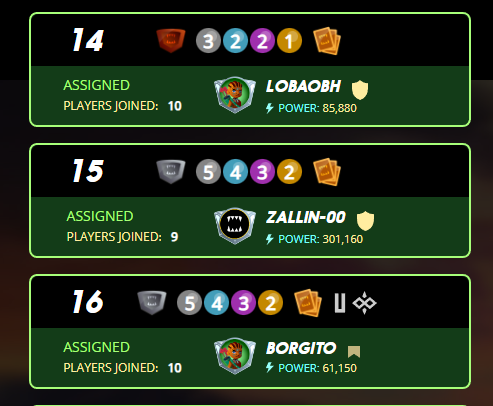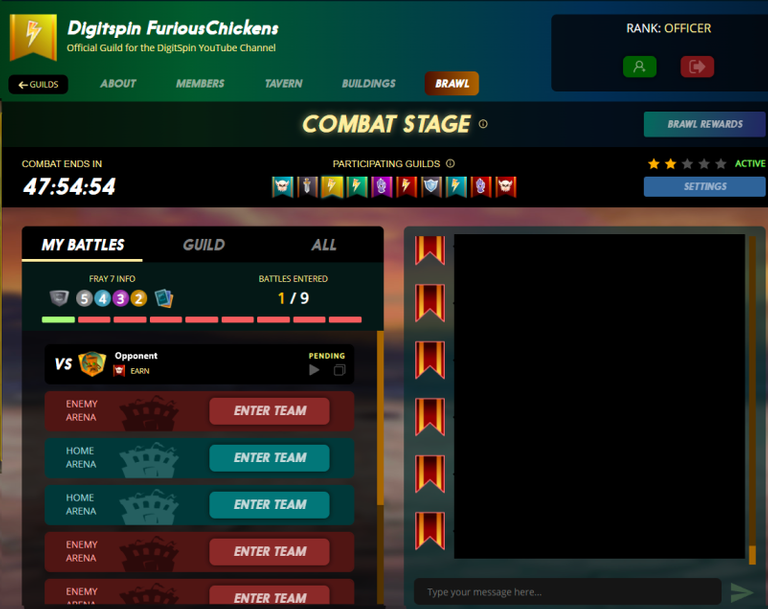
In a recent post I analyzed a slightly different battle and the reason for that difference is the fact that it was a brawl battle.
Some people asked me to talk a little more about brawls as not all people are familiar with them, so I decided to create a post to expand a little on that subject.
What is Brawl?
Brawl is a game mechanic that's exclusively for guilds, meaning you must be part of one to access this game mode.
In a nutshell, Brawl is a tournament where guilds have the chance to battle for the top spots on their respective tiers, which is something that will be addressed later on.
However, there are many details that set Brawl matches apart from regular ranked battles, so let's take a look into those.
Frays
Frays are how battles happen in Brawl. Each fray must be assigned to a player who will battle players from opposing guilds that were assigned to that same fray.
Different frays have different restrictions, which are fixed and predetermined. These are not the same as battle rulesets, which also apply to brawl fights, but on a later stage.

The fray restrictions determine what cards can be used and also their maximum level.
For example, take Fray number one in the image above. That is a Bronze fray, meaning that on this fray, Bronze league level caps are applied. Therefore, the highest possible level of summoners are the following:
- Common: Level 3
- Rare: Level 2
- Epic: Level 2
- Legendary: Level 1
Another restriction determined by the frays is the card foils allowed in the battles. Some frays allow both regular and gold foils while others have a gold-foil-only restriction.

And finally, frays can also determine what card sets can be used. While some frays impose no restriction on that, some will only allow specific sets.
Fray 16 on the image above, for example, only allows cards from the Untamed and Chaos Legion set. That, combined with the fact that this is a gold foil fray, can make it very hard on players that are assigned to it.
Each guild has a maximum number of frays that can be filled. The details that determine this number are not the scope of this post but if there is enough interest around it, I can definitely address it in a future article.
The Brawl cycle
Before getting to the actual fun part of Brawl, which is, well, brawling, I think it's important to note that Brawls happen in a continuous cycle of the following stages:
The Brawl is a continuous cycle of the following stages:
Preparation stage (48 hours)
The stage when players can enter the fraysCombat stage (48 hours)
The stage in which players submit their teamsResult stage (24 hours)
In this stage, the final result is clear, and the rewards are given.
Brawl Combat
As per the cycle above, when the Combat Stage begins, Frays are locked in, meaning players can no longer switch, leave or join them. The only option is to fight!
Brawl combats are very similar to regular ranked matches but there are a few key differences so let's discuss them.
Home and Away Arenas
When it's time to submit your teams, you will find up to 9 slots, some labelled as "Home Arena" and some labelled as "Enemy Arena".

Guilds fighting in their Home Arena can benefit from different buffs, such as extra mana to build their compositions, taking the win if a draw occurs or the ability to ban cards, preventing the enemy guild from using those cards.
Guilds can get those advantages by upgrading their buildings, which is another guild-specific feature. I will not discuss buildings in this article but I'm happy to do so in a future article.
Another difference between brawl fights and regularly ranked fights is that they do not cost energy. The number of brawl combats you can fight is limited by the number of slots open in your fray.
There is something which is not as different any longer but still worthy of note, which is Gladiator cards.
Gladiator is a card set that used to be exclusive to Brawl, but recently the "Conscript" ability and the "Are you entertained" rulesets allow the use of Gladiator cards on ranked battles as well.
But Brawl battles are still different in the sense that you can always use one Gladiator card, regardless of the ruleset or abilities you pick. That is a significant change as Gladiator cards allow for a whole different set of strategies.
And finally, one last minor difference is that the combats can be even more asynchronous on Brawl. That is because the Combat Stage goes on for 48 hours, which means if you submit your teams right after it starts, it's possible that you have to wait 2 days to actually find out the result of your battles.
You still have a time limit of 150 seconds to submit your team to each individual battle, but the actual fight will only happen once you and your opponent have submitted a team, which, again, can take up to 48 hours.
And, after all these differences, the rest is pretty much the same. Each battle will still get a random set of rules and splinter availability, and the actual fights work on the same mechanics as regular ranked matches.
Brawl rewards
I think the final point to address for today is Brawl rewards because they are also different from ranked rewards.
Unlike in ranked matches, you don't get SPS rewards for each individual battle. You also don't get focus points, season points or rating points.
Brawl rewards are granted at the end of each brawl cycle and they are based on the overall performance of your guild, meaning that if one player wins all the battles in his fray but the rest of their guild doesn't do as well, this player's rewards won't be as good because the guild will likely end the brawl in the lower position of the ranking.
There are other factors that impact the total rewards a guild can get, such as guild tiers, for example, but that will also be discussed in a future article.
But what are the rewards?
Brawl rewards consist of three assets: Crowns, Merits and SPS.

Crowns are awarded to the guild itself and it's a form of currency used to upgrade buildings and buy things in the guild's store.
Merits is also a form of currency but it's awarded equally to each participating player and can also be used to buy things on the store, most notably Gladius Cases, which contain Gladiator cards.
And, of course, SPS is the governance token of Splinterlands. This is distributed to players in the form of stake, exactly how it happens on ranked matches, the only difference being that it's not awarded for each individual battle but rather for the whole brawl.
Conclusion
Brawl is a fun game mechanic that adds variety and excitement to Splinterlands. It's also an important social component of the game because it incentives players to work together and help each other as the final rewards depend on the performance of the guild as a whole.
Moreover, it's a great source of Merits, which can be used to obtain Gladiator Cards and, since they can now be used on ranked matches too, Brawls are a good way to build up your deck.
If you also want to discover the joys of Brawl, the first step is to start playing the game, so click here to join Splinterlands today!




